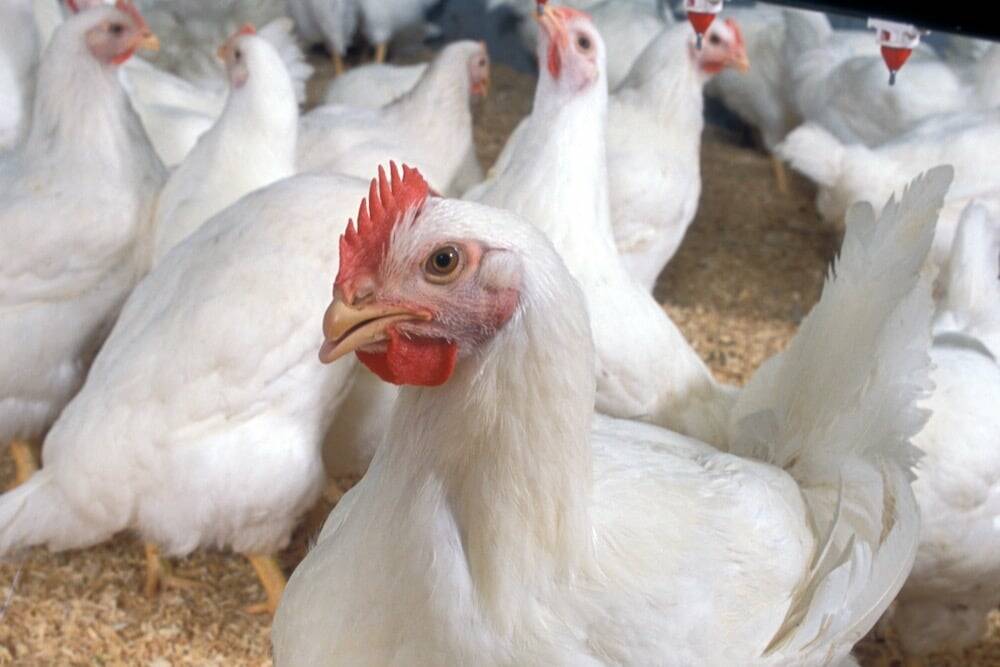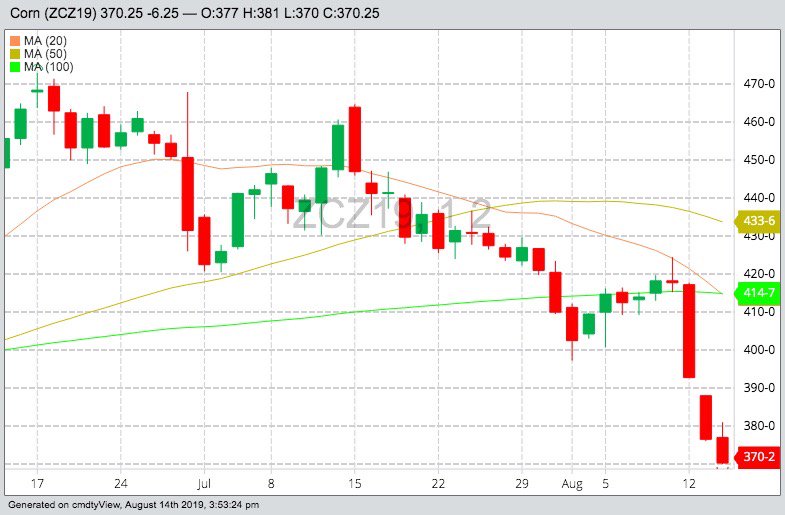MarketsFarm — For Steve Georgy, the events of this week have left him somewhat gobsmacked.
The president of Allendale Inc. at McHenry, Ill. said he didn’t completely buy the numbers in the August supply and demand report issued Monday by the U.S. Department of Agriculture (USDA). And Georgy has been wondering why the U.S. “punted” when it came to trade talks with China on Tuesday.
Georgy said USDA’s world agricultural supply and demand estimates (WASDE) were a market-changer, and the report angered a lot of farmers when it came to corn.
Read Also

China lifts Brazilian poultry imports ban over bird flu
China lifted a ban linked to Brazil’s avian influenza outbreak, the country’s General Administration of Customs said in a notice released on Friday.
The report also put a stop on corn trading on Monday at the Chicago Board of Trade (CBOT) when bids plummeted 25 cents, its limit down, with the December contract having dropped to $3.9275 per bushel (all figures US$).
In the monthly WASDE, USDA lowered its forecast of planted acres for corn by 1.7 million, to now 90 million. Georgy’s first contention with the report is that USDA implied farmers planted or intended to plant about 101.2 million acres. In turn, that has meant prevented planting of about 11.2 million acres.
“It’s really hard to wrap your arms around that kind of a number and almost seems fabricated,” Georgy said.
He also took issue with USDA’s yield projections for corn; the estimate of bushels per acre was increased from 166 to 169.5 bu./ac.
“With all of problems we’ve seen as far as planting, the USDA increased yields. That’s kind of the unbelievable thing number two,” Georgy commented.
Allendale’s estimate for corn yields has called for 160 to 163 bu./ac., he added.
“Whether we believe the [USDA] numbers or not, the problem is they’re the numbers we have to use,” he said, noting the markets will now focus on the any early frost that could strike crops.
As for the latest turn in U.S./China trade talks, Georgy said he found it odd that President Donald Trump suddenly stopped being so aggressive on imposing further tariffs on Chinese imports.
Trump was set to hike those tariffs by 10 per cent on Sept. 1, but delayed that to Dec. 15, following a teleconference on Tuesday between top negotiators from both countries.
The Allendale president speculated Trump’s move may have been to create optimism around trade talks, which the stock markets took to heart yesterday.
However, with reports of German and Chinese economies slowing down, and strong indicators the U.S. could be headed for a recession, the markets nosedived Wednesday morning.
— Glen Hallick writes for MarketsFarm, a Glacier FarmMedia division specializing in grain and commodity market analysis and reporting.











